
How to Optimize the Post-Click Experience for Better Customer Journeys
Marketers pay a lot of attention to click-through rates (CTRs). But what customers do after they click is even more important to drive the conversion.
In this article, you’ll learn about the post-click experience and why you should optimize it. I’ll also cover four ways to create a post-click experience that reduces friction.
Table of contents
What is the post-click experience?
The post-click experience is what happens after a user clicks on your ad. It’s a direct result of the components on the next page, or a pop-up a user sees after your ad. This can include the copy, design, and navigation elements.
The experience you offer here (including speed, ease, relevance, and value) will increase either your conversion rate or your bounce rate.
Take this social media ad from Verizon. It makes switching over to its Fios Home Internet sound like a breeze. But how true is that?
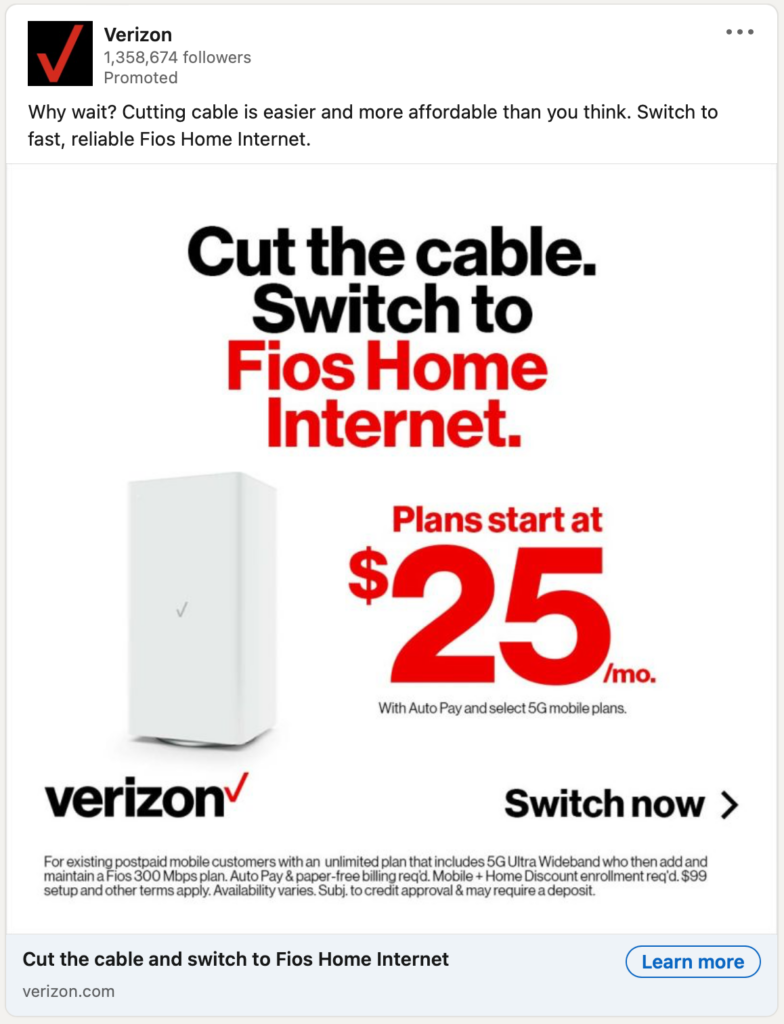
After I click on the main ad, Verizon asks me to fill out a short form to check if Fios is available at my home. I can also provide my contact information to receive Verizon’s “latest promotions.”
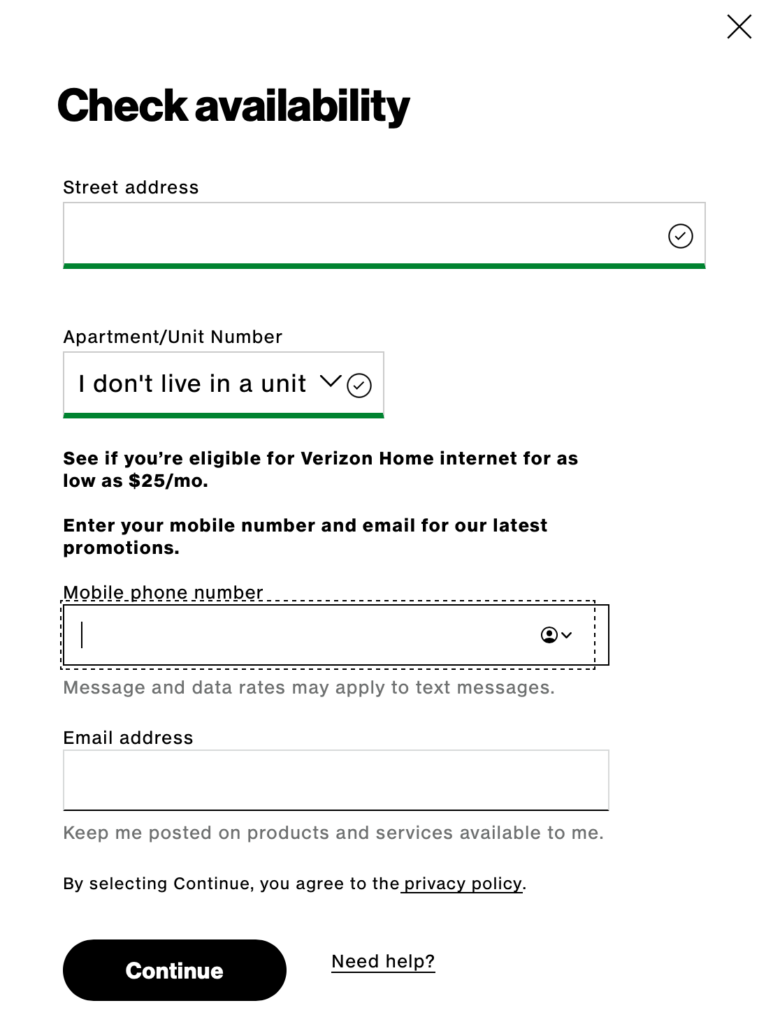
Clicking through multiple windows can be time-consuming. It gives me plenty of opportunities to drop out. Verizon’s form asks for the least amount of details, which removes friction and makes the process feel effortless.
If your post-click experience is not as easy as possible, potential customers could get distracted or change their minds. The design here is clean and minimal, which keeps my focus on entering my details.
After submitting my information, the next screen tells me that someone in my household has already started to order Fios:
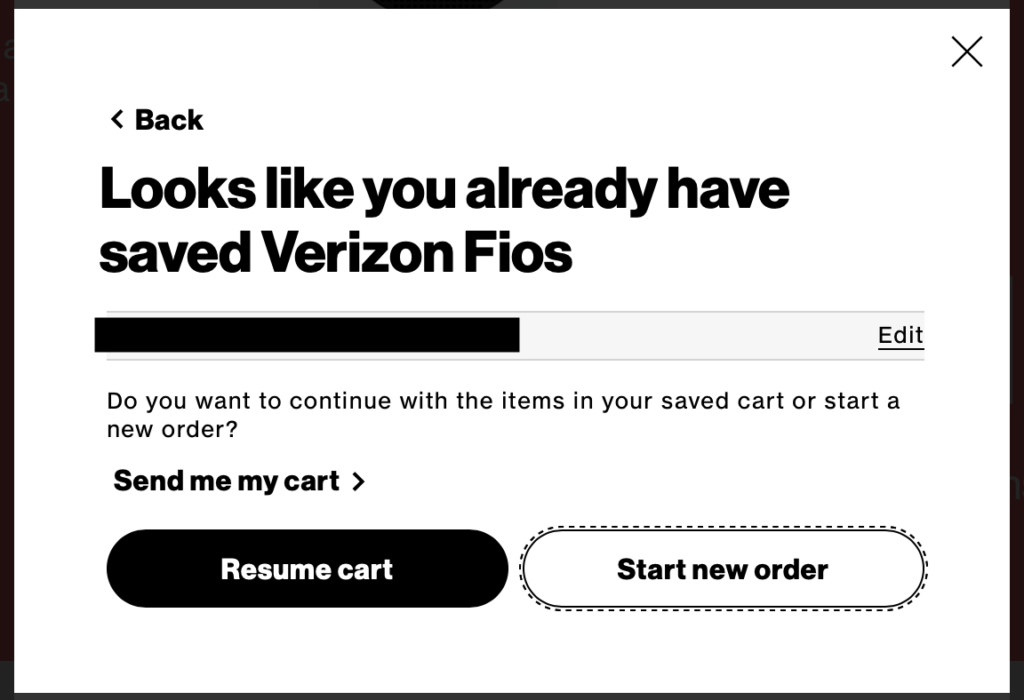
In addition to saving me time, this personalized touch makes it seem like the brand is speaking to me one-on-one. It remembers and refers to my past actions (or those of someone else in my household) which gives me confidence in its quality.
I start a new order and answer some brief questions about how my household uses the internet. Verizon confirms my answers in a transition window:
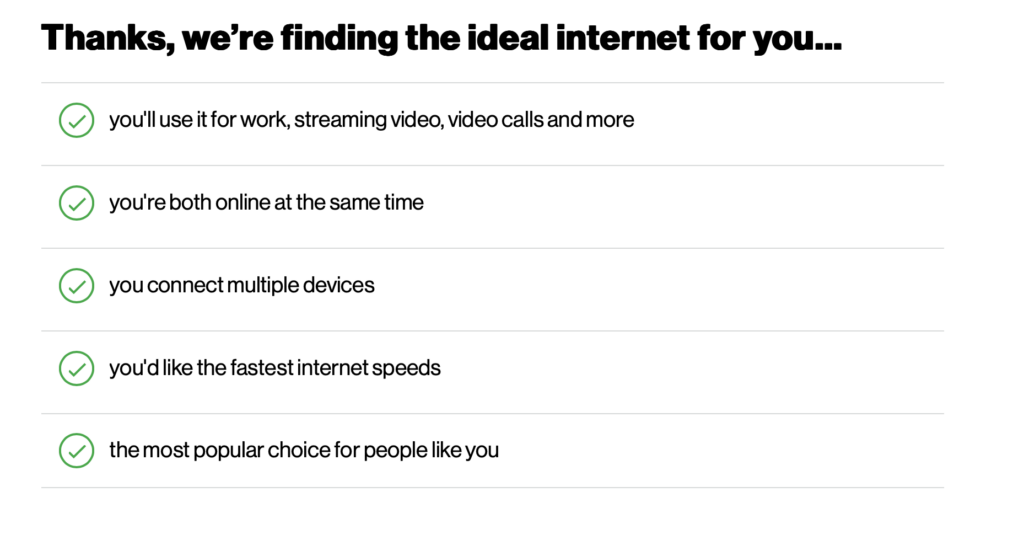
This confirmation further personalizes the process and reassures me the offer will be relevant and valuable.
In the final step, Verizon takes me to a shopping cart containing my best-fit Fios plan. As I prefer streaming over gaming, Verizon includes a surprise personalized offer of six months of Disney+ Premium:
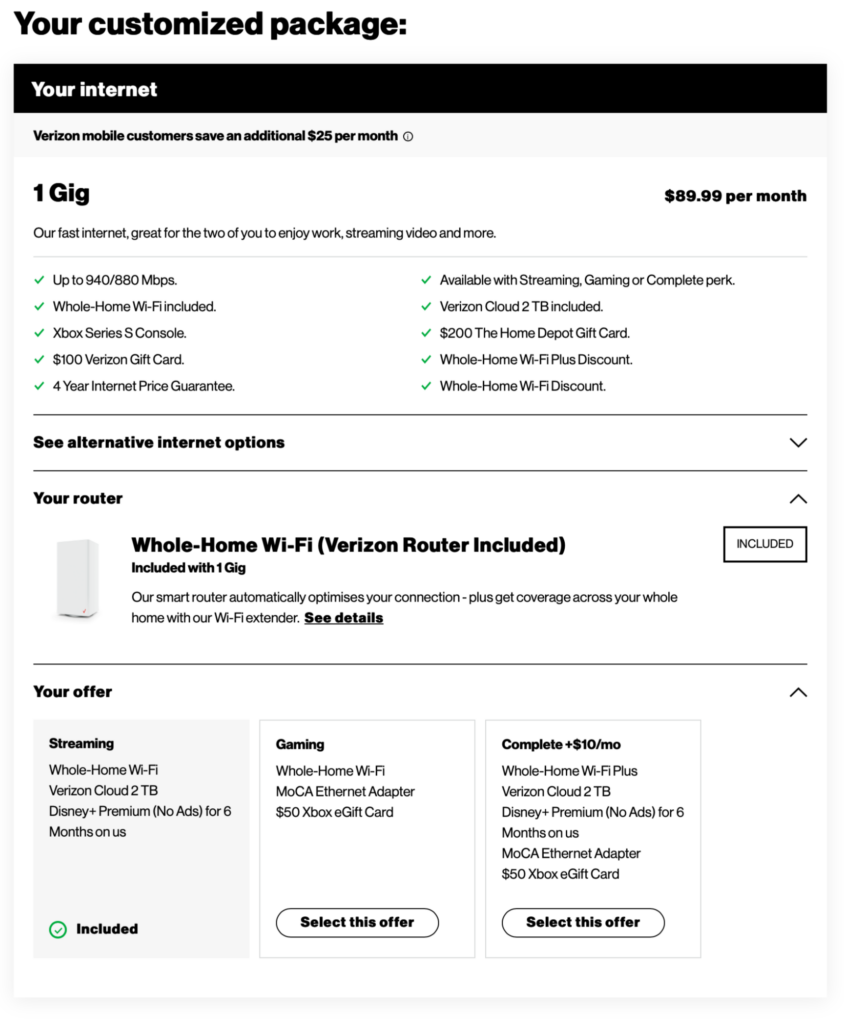
This bonus offer is designed to make me feel like I want to give something back and become a customer. It’s a tactic which leverages a psychological behavior known as reciprocity—a social norm that dictates we should reward a positive action with one of our own.
Ultimately, I’m excited to complete my purchase because I feel like I’m getting good value for money and an offer designed just for me. In other words, this post-click experience is:
- Easy to use
- Relevant to me
- Offering value
These are the three pillars of a good post-click experience.
Why you should optimize the post-click experience
Choosing whether or not to click on an ad is an almost instant decision. However, the post-click experience is where people will spend most of their time as they decide whether or not to become a customer.
This is the part of the journey where decision making happens.
Optimizing the post-click experience to make this decision making as friction-free as possible helps companies:
- Increase customer acquisition
- Lower customer acquisition costs
- Increase customer lifetime value (CLTV)
Here’s how.
Customers today have high expectations for brand interactions. According to McKinsey, 72% of customers say they expect businesses they purchase from to recognize them as individuals and be aware of their interests.
Personalization (relevance) also makes 76% of consumers more likely to consider purchasing from your brand:
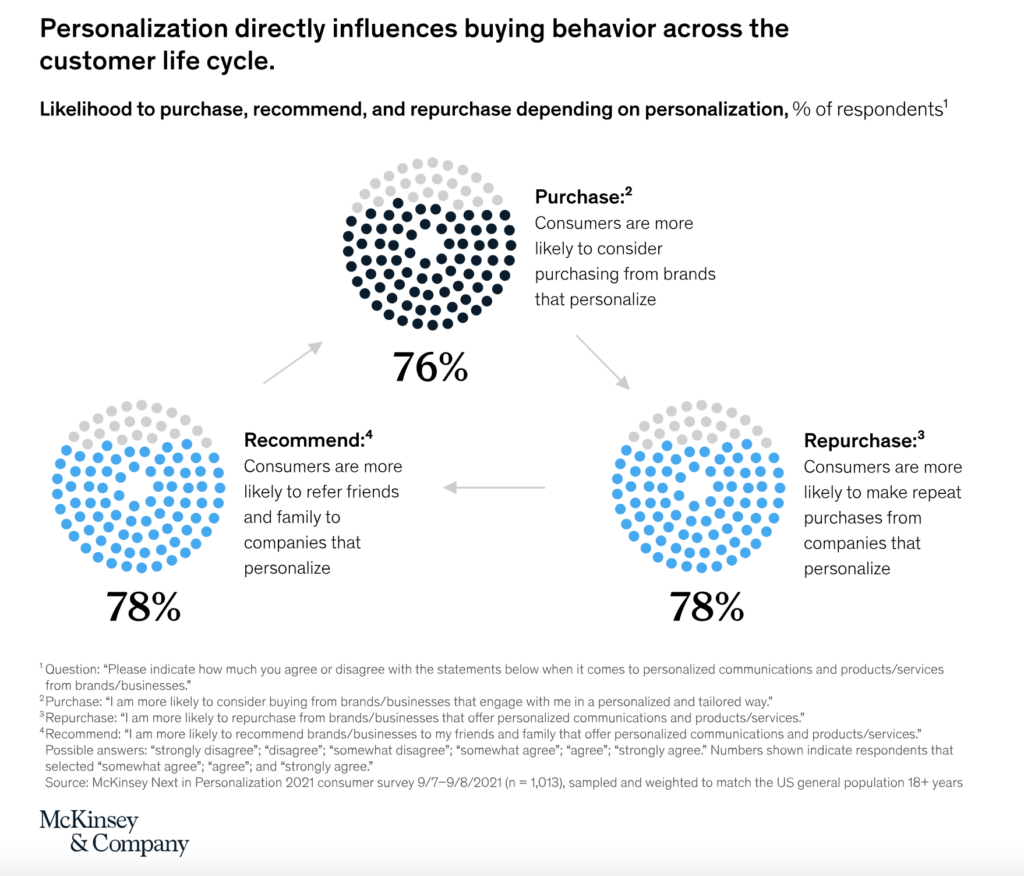
MIT Sloan Executive Education (MITSEE) employed a similar strategy. By taking the time to understand the different segments, it could address customer pain points and personalize the customer journey.
Doing so helped increase its clicks by 107% and drive more qualified traffic into the post-click experience stage. Thanks to this, its conversion rates increased by 67%.
People will also pay more for products and stay with brands that make things easy for them. A recent survey from brand consultancy Siegel+Gale found that people will pay more for simplified experiences and remain loyal to the companies that offer them.
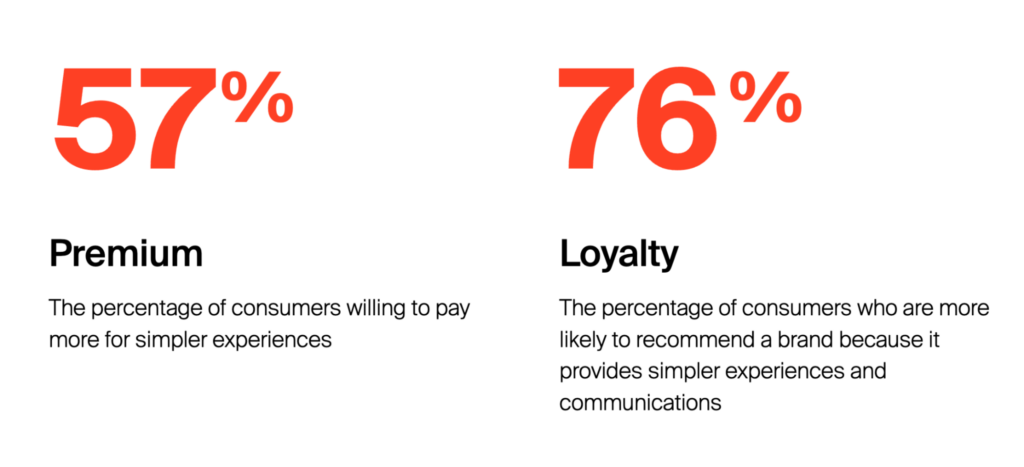
In addition, it’s crucial to clarify that your product or service offers value.
This is especially true in a volatile economic climate. According to Bain, value is difficult to pin down, and it can differ by industry. While it conducted this study in 2016, the information remains consistent.
Bain concludes that “customers evaluate products based on price and perceived value.” There are as many as 30 elements of value that companies can explore.
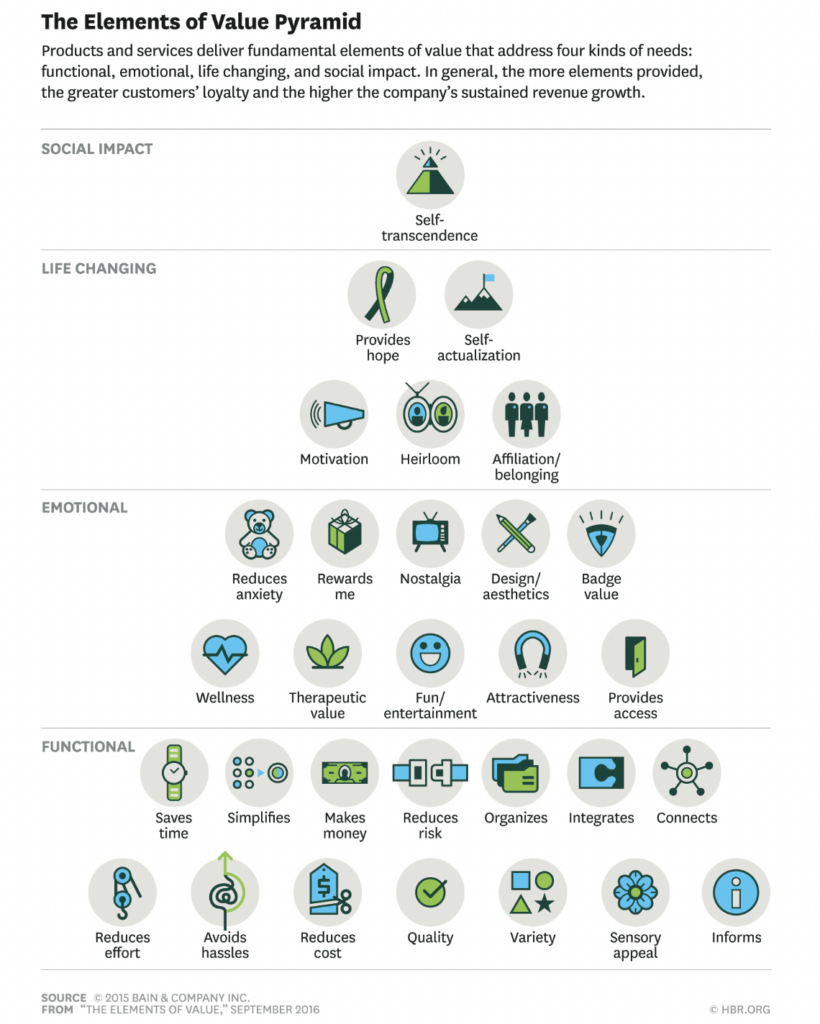
Source: HBR
Bain found that offering customers true value directly contributed to company performance, both in terms of customer relationships and revenue.
You could offer value in your post-click experience with a competitive price. Or provide a must-have offer that speaks exactly to your audience’s problems and is worth the cost.
Top Tip: Learn how to understand and nurture the entire customer journey with our guide to the considered purchase journey 🐼
How to optimize your post-click experience
Now that you know why you should optimize your post-click experience, here are some tips to help you do just that:
1. Reduce friction by prioritizing ease of use
An intuitive post-click experience is more inviting to customers than one with unexpected twists and turns.
You can see an example of a good experience in LSE’s post-click experience. The ad itself is about a specific public policy course:

When clicking “Learn more,” it takes you to a simple landing page. It gives you all the information you need up front and invites you to view the prospectus with a large CTA button:
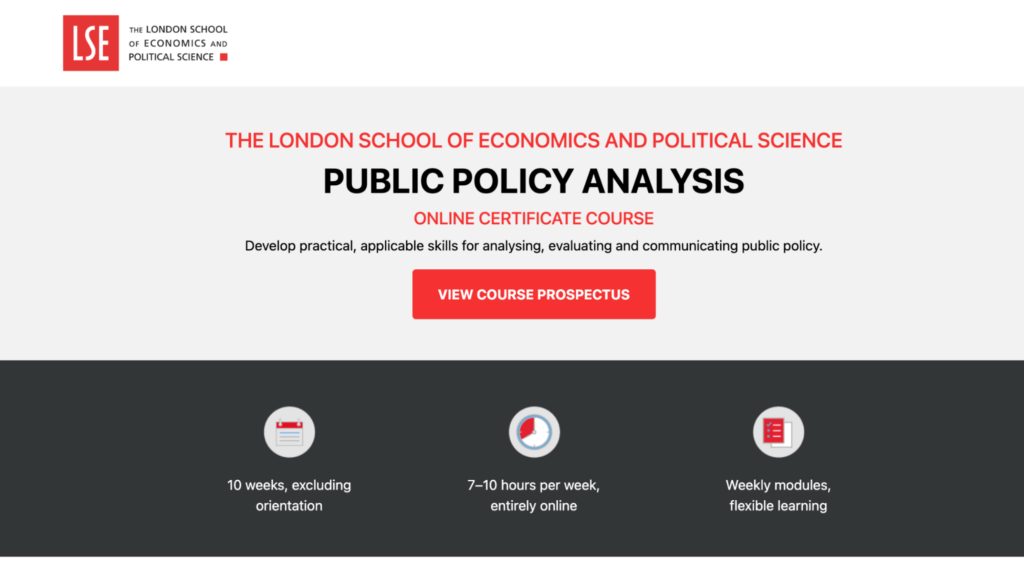
If you’re still not convinced, there are several modules below with more information. What this site does well is not overloading you with too much information or confusing the experience with text-heavy blocks.

The final module is a form with three essential fields to get the prospectus on the course.
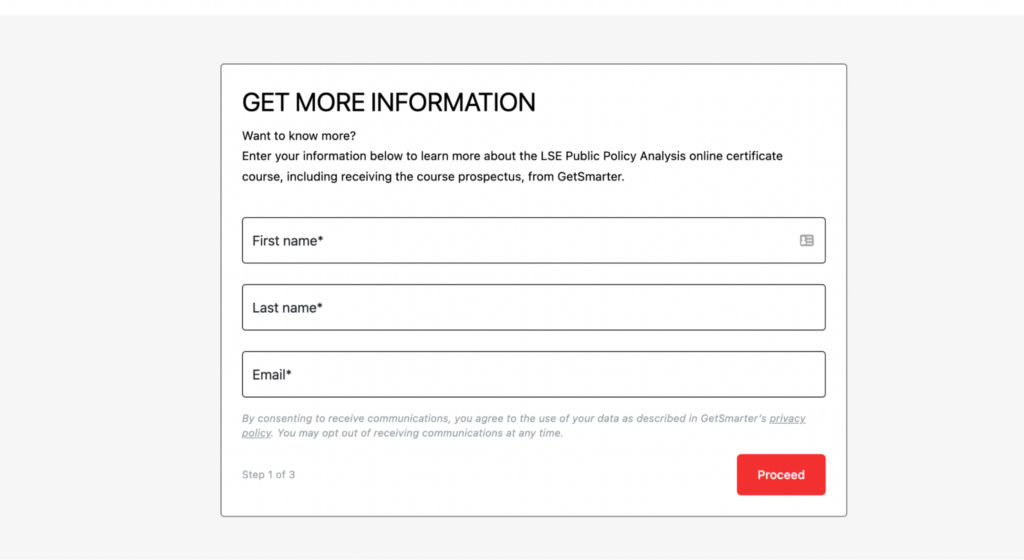
LSE delivers just the right amount of information, and requests just the right amount of details, from the user. More modules could drive the user away. More fields could also overwhelm and convince them the pay-off (the prospectus) isn’t worth the effort.
When creating frictionless post-click elements, it’s crucial you take into account the mobile experience—around 4.4 billion of us access the Internet from mobile devices.
Considering these mobile users when working with Wyndham Vacation Rentals helped us boost revenue per mobile visit by 11% and increase annual revenue by $8 million.
Hiding the product a user wants to learn more about is one example of creating friction within your post-click experience.
Google recommends these tactics for developing low-friction landing pages for mobile devices to cover others:
- Make sure your page loads quickly
- Make the value clear to the user at first glance
- Provide a prominent call to action
- Position important content “above the fold” so users see it without scrolling
- Auto-fill key information where possible
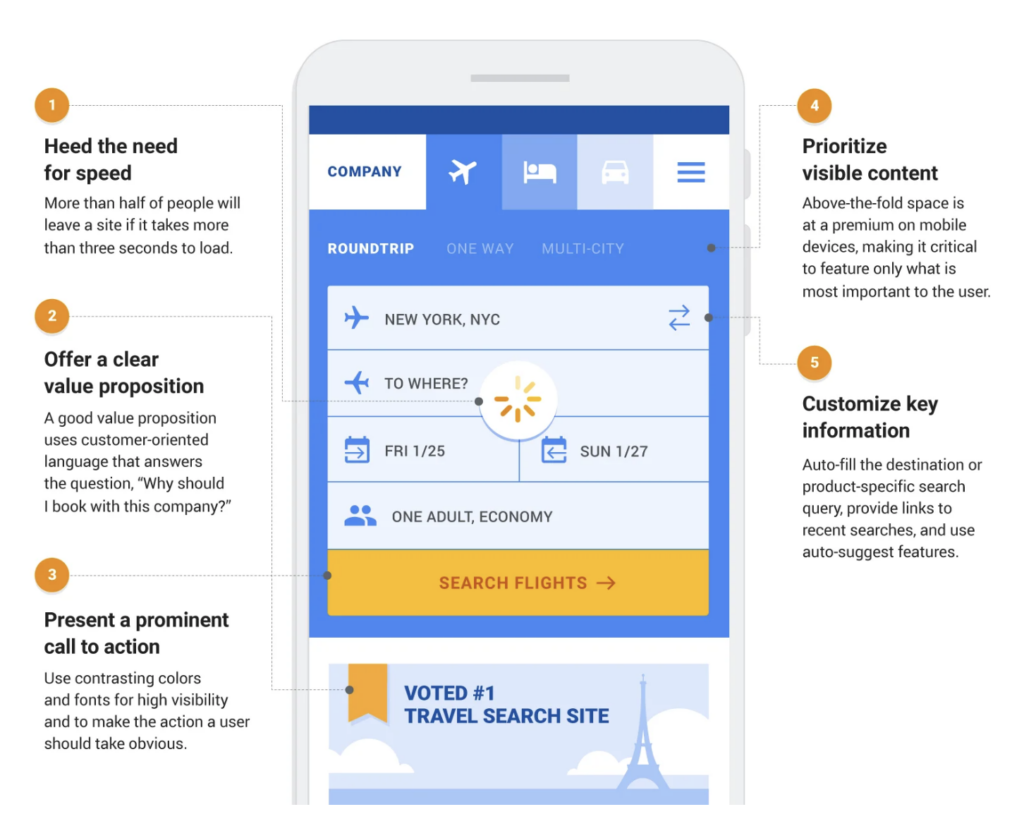
It’s important to note that these tips can also apply to your desktop post-click experience.
Whichever device you’re targeting, make it easy for prospects to reach that conversion stage and decide to become a customer.
2. Use relevant creative and messaging at every touch point
Personalized messaging is no longer a “nice to have.” According to Salesforce insights, 73% of customers now expect companies to understand their unique expectations and needs.
Consumers also have high expectations for ads. GWI found that consumers across all demographics want ads to provide product information and discounts. But they also care more about relevance than promoting social causes. The landing page prospects arrive on after they click on your ad should reflect this same, relevant messaging.
GWI’s results aren’t surprising. Modern consumers are short on time and faced with a multitude of choices at every turn. Relevant messaging can give them confidence and trigger them to make a purchasing decision post-click.
Gartner’s research suggests the following ways to use personalization to help people through the buying journey:
- Help the customer get a better deal
- Save the customer time
- Provide information the customer didn’t have before
- Make the purchase process easier
- Make the purchase process less confusing
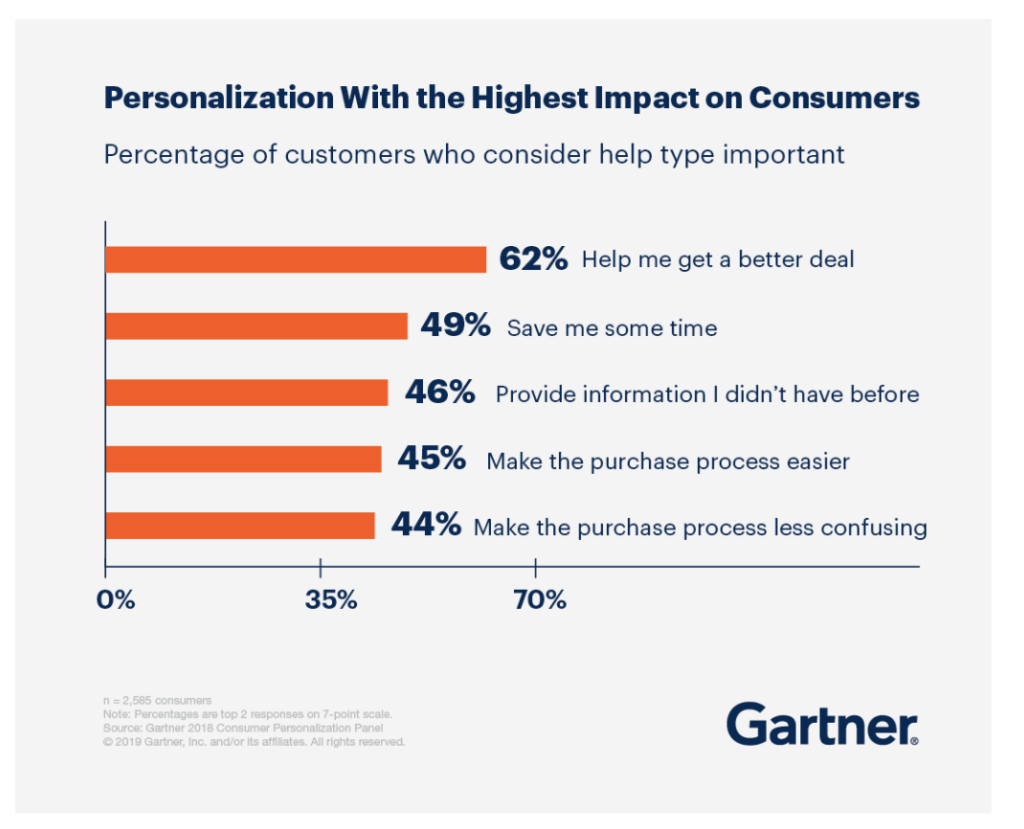
Companies of any size can deliver these kinds of relevant post-click experiences. For example, Solar-Estimate.org is a free public service that matches consumers with solar providers in their area.
Its Instagram ad invites consumers to find out if solar could be worth it for them:

Because I’ve given Instagram my ZIP code, and therefore access to my location, the next landing page targets the solar policy in my region: New York.
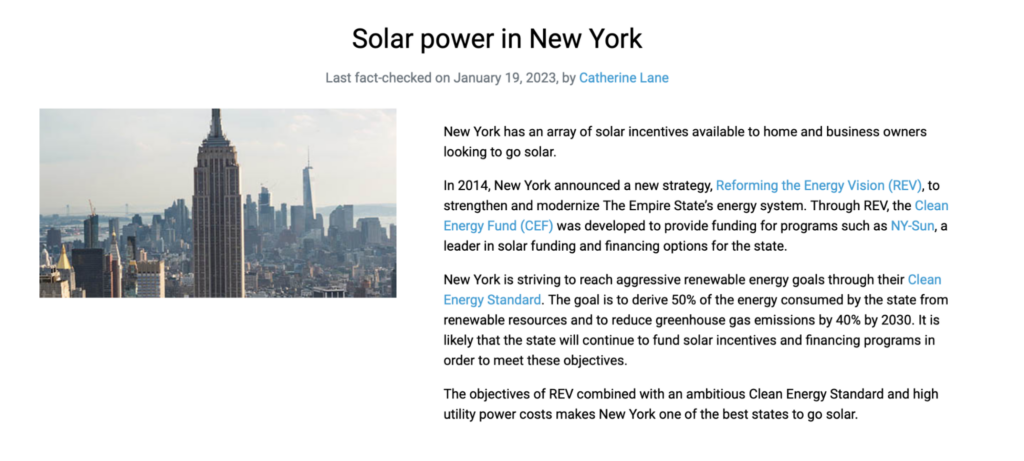
It further highlights the relevance of the page with statistics on the potential cost savings based on average energy prices in New York:

Those interested then need to answer questions about their home like their address, size, roof type, etc.
Solar-Estimate.org makes it easy to get started by pre-populating the prospect’s ZIP code.

Effective personalization can be as simple as this. You don’t need a ton of data or flashy graphics, but you do need to combine it with proof that you’ll deliver value.
3. Deliver value and make the payoff worthwhile
Value drives post-click experiences and helps people move from prospect to customer. It’s what tells the customer that this effort to fill out a form or enter their payment details is worthwhile.
We saw earlier that Bain narrowed down 30 elements of value, including saving time and providing entertainment.
Once you’ve decided how your product or service provides value, you need to demonstrate this value to the customer when they’ve clicked on your ad.
Bridge the before-after gap
Clarify to users that you can get them to their goal (the “before-and-after gap”).
Let’s say you’re a building contractor. Your prospect needs more hotel rooms to accommodate growing demand (the “before” stage). They want a larger hotel so that they can serve more customers at once (the “after” stage).
Achieving this challenge (or filling this “gap”) isn’t easy, and that’s why your service is so valuable. People who click on your ad know it isn’t a short-term process, but your case study images and testimonials show it’s worthwhile.
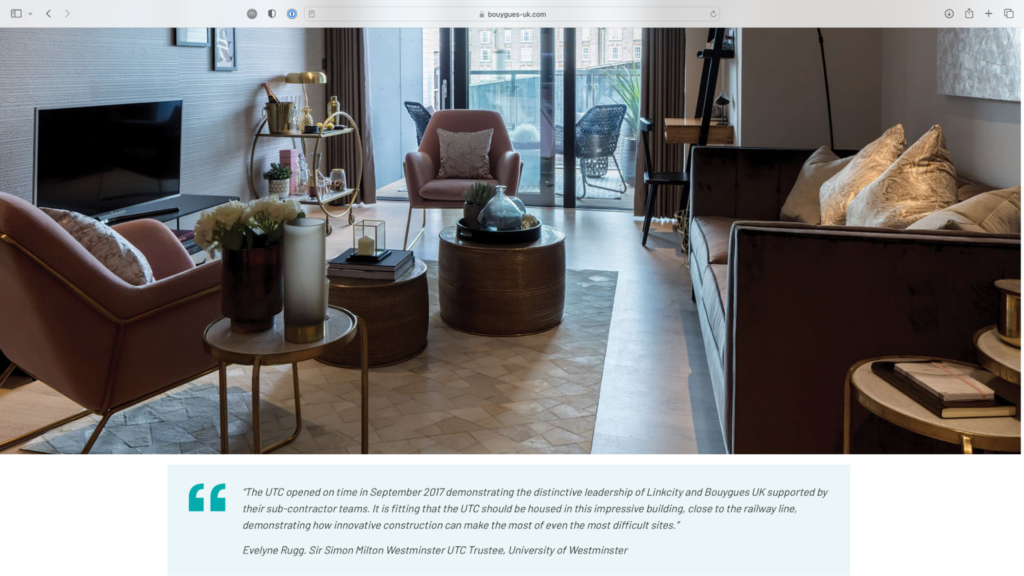
In this case study example from Bouygues UK, they use a large image to focus the prospect’s attention. They then follow this with a testimonial that talks about the building process.
In the testimonial, their customer mentions the challenges the site presented and how the contractor still fulfilled their needs. This helps to show their expertise, and, alongside the photo, what they could create even in more difficult locations.
State your value up front to differentiate from the competition
Another way to demonstrate value is by differentiating yourself from your competition.
Stating why you’re different within your post-click experience increases the perceived value of your offer. A customer’s perception is based on its desirability to them—a psychological concept known as the Value Perception Dilemma.
To determine your product’s perceived value, consider your audience’s expected benefit (the after) and the cost of getting there (whether that’s finance, time, or effort).
To create a competitive advantage, balance the two and find the right differentiator to direct your consumers’ attention towards.
You can demonstrate your value with the heading of your landing page. WordPress plugin Hello Bar’s social media ad takes me to its homepage. Here, it conveys the results of its service with a big, bold title:
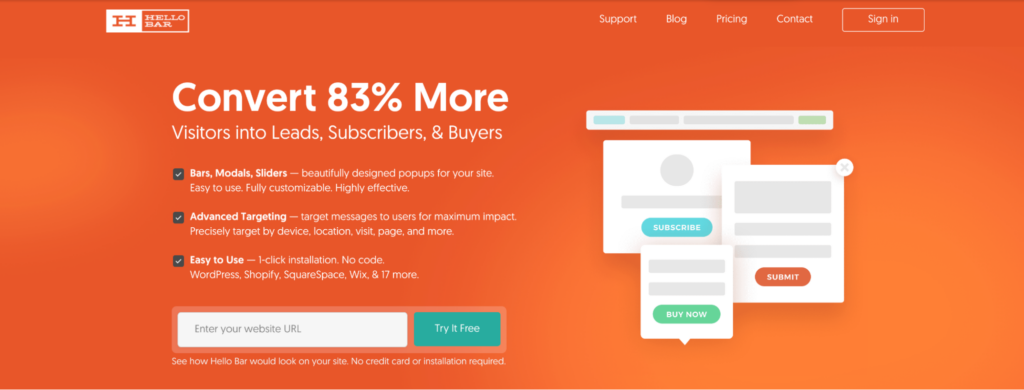
Source: Hello Bar
Top Tip: Create high-quality landing pages for every campaign with our framework for landing page development 🐼
Explaining the precise value you offer (in this case, “convert 83% more visitors”) means potential customers don’t have to search around for this information and it could reduce the time they spend deciding whether to sign up or not.
Less time deciding means fewer prospects and more customers improving your bottom line.
4. Establish better marketing-and-IT alignment for faster execution
One of the main barriers to improving the customer journey is a lack of collaboration between marketing and IT.
The February 2022 CMO Survey found that under 40% of marketers have suitable systems to track customer engagement and inform their roadmaps.
At the same time, 50% of companies reported to Twilio that they struggle to get accurate data for personalization.
To truly impact customer expectations, you need to learn the answers to these questions:
- Do I already know everything about this person or customer?
- What does their current behavior tell me about them?
- Can I deliver relevant product information to them? If so, when and how?
- What product information do they need to make a decision?
- How much information do they need, and how do I get it to them?
- Is there a way to accurately track if and when they become a customer?
With a more comprehensive understanding of customer behaviors, you can tailor your post-ad landing pages with the right number of steps and information. You can also surprise them with unique offers they’d love, and help them overcome objections.
You may already have a ton of customer data from pop-ups, forms, and landing pages, but do you use it?
IT departments usually manage, or heavily influence, your customer data platform (CDP), customer relationship manager (CRM), content management system (CMS), and point-of-sale (POS) systems where you store this information. By collaborating with them, you can find fast answers to the above questions and translate personalization ideas into technical realities.
This approach worked for McAfee. By creating cross-functional teams, the software giant discovered that various factors influenced different customer segments. Some were more influenced by reviews, some by price, and others by initial product experience.
The company’s marketing content didn’t target these different consumers’ values. Instead, it was repetitive, generic, and (at times) insufficient.
The new cross-functional teams worked together to redesign the post-click experience of its trial period and frame it around newly-identified customer needs (thanks to data from the IT department).
Due to this collaboration, customer acquisition grew by 300%, retention increased, and revenue grew by double digits over three years.
If you want to see more profitable business outcomes like these, you need a solid foundation of measurement. These are the following metrics that will help your marketing and IT teams quantify their success:
- Customer acquisition and retention rates
- Customer acquisition costs (CAC)
- Customer lifetime value (CLTV)
In addition to the tools that measure these, your marketing team needs a marketing technology (martech) stack they can rely on to make personalization and experimentation possible.
This could include a web experimentation platform like ABTasty and Webtrends Optimize, or a marketing automation platform like Salesforce or Blueshift.
Top Tip: Learn why marketing experimentation is crucial for digital transformation in our handy guide 🐼
This collaboration between your teams and technology can make it easier to find out what makes your customers tick. Then make faster, data-driven changes to your post-click experience to help lower costs and drive higher acquisition and retention rates.
Key takeaways
Optimizing your post-click experience strengthens a key aspect of the customer journey that often gets overlooked in favor of the ads themselves. Reducing customer acquisition costs, improving retention rates, and increasing customer lifetime value should matter more than how many people click on your ads.
To create the value-packed, personalized post-click experiences customers have come to expect, you need to rethink how your marketing team operates—maybe even how you structure your organization.
Investing in marketing and IT’s relationship will pay off with more than just better landing pages. By building this foundation within your business, you can improve return on ad spend, increase revenue, and deepen customer loyalty.
READY TO PROVIDE A BETTER POST-CLICK EXPERIENCE?
Get insights and tips to drive more business from less ad spend, more profit from less cost, and more customer value from less churn.